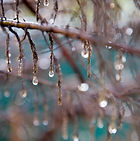
Step 2: Wedging


Step 1: Locating the Raw Materials

In the past, clay had to be dug from the ground by hand. While some potters still enjoy this naturalistic approach to the process, many clay in bulk from ceramic retailers who sell the material in bulk purchase.
In order to remove air bubbles and properly blend all materials in the clay, it is mixed by hand, using rotating and pressing techniques. This step is extremely important, as any air bubbles left in the clay will burst during the firing process, thus ruining the pottery.
As the clay dries and loses moisture, it becomes more stable, which helps to prepare it for further modifications.
Once the clay has been thoroughly wedged, it may be formed using a slab, wheel, coil, pinch, or mold, depending on the desired outcome.

Step 4: Drying


Step 3: Forming

Step-by-Step: The creation of pottery, from the ground to your table
Before pottery that is painted at studios like Straight Upp Creative Studio it goes through many steps. Here we have listed the steps these art peices go through.

Step 5: Leatherhard


Step 7: Bisque Firing


Step 9: Glazing Firing


Step 6: Greenware


Step 8: Glazing

After the molded clay has dried for several days, it reaches a state of partial dryness referred to as “leatherhard.” Because the piece has now lost some flexibility and become more rigid, this is the ideal time to refine its form with any additional carving or trimming. Once the clay has dried beyond this point, no further changed to its form can be made.
This step is the first of two firings in the process. This firing reaches temperatures of approximately 1,800 °F, which hardens the piece and makes it easier to work with in the glazing process. However, clay fired at this temperature still maintains its porosity, meaning it will absorb the glaze easier. The bisque firing takes a total of 3 days to complete.
When a piece of clay has dried completely, it is referred to as “greenware.” At this point, the piece has lost all of its water content, and subsequently, its flexibility. No clay can be added or removed to greenware; it is a passive state in which the piece is waiting to be fired.
Glaze is a mixture of ground glass, clays, coloring materials, and water that can be applied to ceramic by dipping, pouring, spraying, or brushing.
Like the bisque, the second firing also takes 3 days. However, this firing reaches a temperature of 2,350 °F. After this uppermost temperature is reached, the pottery is allowed to cool. Once removed from the kiln, the pieces are ready to be displayed.







